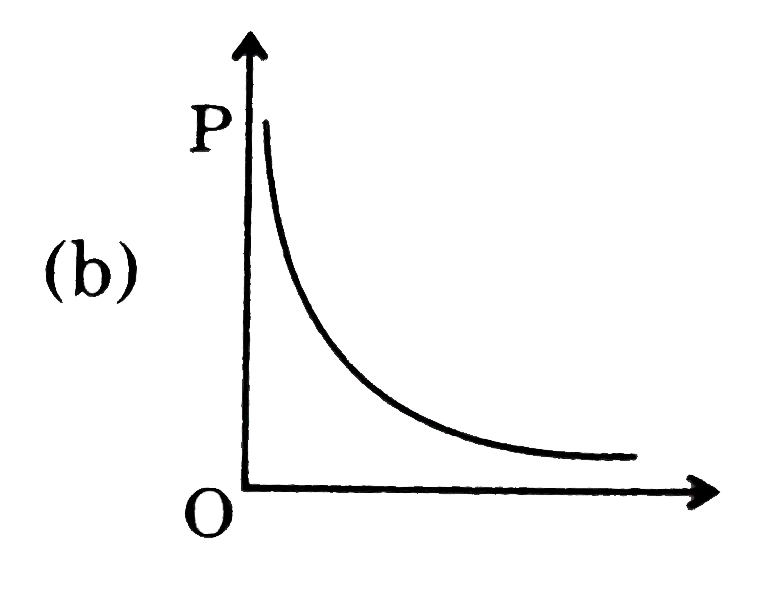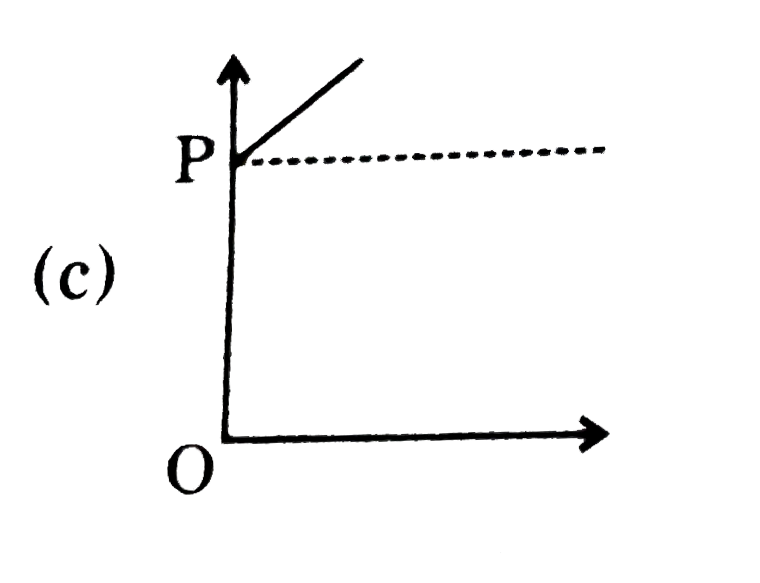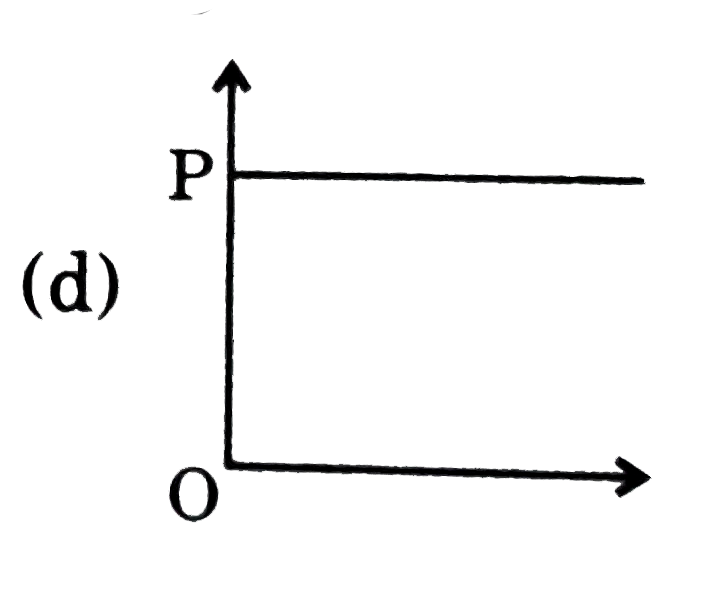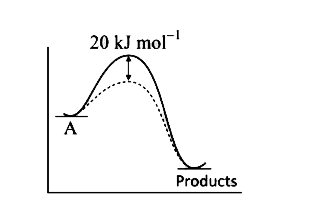A→ Product and (dxdt)=k[A]2. If log (dxdt) is plotted against log [A], then graph is of the type:




The correct Answer is:C
To solve the given problem step by step, we need to analyze the relationship between the rate of reaction and the concentration of reactant A.
1. Understand the Rate Law:
The rate of reaction is given by the equation:
dxdt=k(A)2
where dxdt is the rate of reaction, k is the rate constant, and (A) is the concentration of reactant A.
2. Take Logarithms:
To analyze the relationship graphically, we take the logarithm of both sides of the equation:
log(dxdt)=log(k(A)2)
3. Apply Logarithmic Properties:
Using the properties of logarithms, we can expand the right-hand side:
log(dxdt)=log(k)+log((A)2)
log(dxdt)=log(k)+2log((A))
4. Rearranging the Equation:
We can rearrange this equation into the form of a straight line y=mx+c:
log(dxdt)=2log((A))+log(k)
Here, we identify:
- y=log(dxdt)
- x=log((A))
- The slope m=2
- The y-intercept c=log(k)
5. Graph Interpretation:
Since the slope m=2 is positive, this indicates that as the concentration of A increases, the rate of reaction also increases. The graph of log(dxdt) versus log((A)) will be a straight line with a positive slope.
6. Conclusion:
The correct type of graph when plotting log(dxdt) against log((A)) is a straight line with a positive slope.
Final Answer:
The graph is of the type: Option C (a straight line with a positive slope).
The rate of reaction is given by the equation:
dxdt=k(A)2
where dxdt is the rate of reaction, k is the rate constant, and (A) is the concentration of reactant A.
To analyze the relationship graphically, we take the logarithm of both sides of the equation:
log(dxdt)=log(k(A)2)
Using the properties of logarithms, we can expand the right-hand side:
log(dxdt)=log(k)+log((A)2)
log(dxdt)=log(k)+2log((A))
We can rearrange this equation into the form of a straight line y=mx+c:
log(dxdt)=2log((A))+log(k)
Here, we identify:
- y=log(dxdt)
- x=log((A))
- The slope m=2
- The y-intercept c=log(k)
Since the slope m=2 is positive, this indicates that as the concentration of A increases, the rate of reaction also increases. The graph of log(dxdt) versus log((A)) will be a straight line with a positive slope.
The correct type of graph when plotting log(dxdt) against log((A)) is a straight line with a positive slope.
The graph is of the type: Option C (a straight line with a positive slope).
Topper's Solved these Questions
- GRAPHICAL INTERPRETATIONBOOK - GRB PUBLICATIONCHAPTER - GRAPHICAL INTERPRETATIONEXERCISE - I.Electrochemistry
1 Videos
- GRAPHICAL INTERPRETATIONBOOK - GRB PUBLICATIONCHAPTER - GRAPHICAL INTERPRETATIONEXERCISE - Electrochemistry
9 Videos
- GRAPHICAL INTERPRETATIONBOOK - GRB PUBLICATIONCHAPTER - GRAPHICAL INTERPRETATIONEXERCISE - H. Chemical Kinetics
1 Videos
- F-BLOCK ELEMENTSBOOK - GRB PUBLICATIONCHAPTER - F-BLOCK ELEMENTSEXERCISE - Subjective type
7 Videos
- HYDROCARBON (ALIPHATIC)BOOK - GRB PUBLICATIONCHAPTER - HYDROCARBON (ALIPHATIC)EXERCISE - Previous years jee questions
28 Videos
Similar Questions
Knowledge Check
A+B→Product,dxdt=k[A]a[B]b If (dxdt)=k, then order of reaction is :
A4B2C1D0For Freundlich isotherm, a groph of log x/m is plotted against log p.
A1/n, kBlog 1/n, kC1/n log kDlog 1/n, log kFor the reaction: A+B→ product dxdt=k[A]a[B]b
if dxdt=k, then the order of the reaction is:A4B3C1D0
∫log(5+t)dt
View Solution(logx)2xdx
View SolutionFor the following reaction,
A500K−−→ Products
A400K/catalyst−−−−−−−−→ Product
If (−d[A]dt)500K=−(d[A]dt)400K
no catalyst in presence of catalyst Then Ea is approximately :

View SolutionIf y=2log x , then dydt is
View Solution∫1/2−1/2cosxlog(1+x1−x)dx=klog2, then k equals
View Solution
